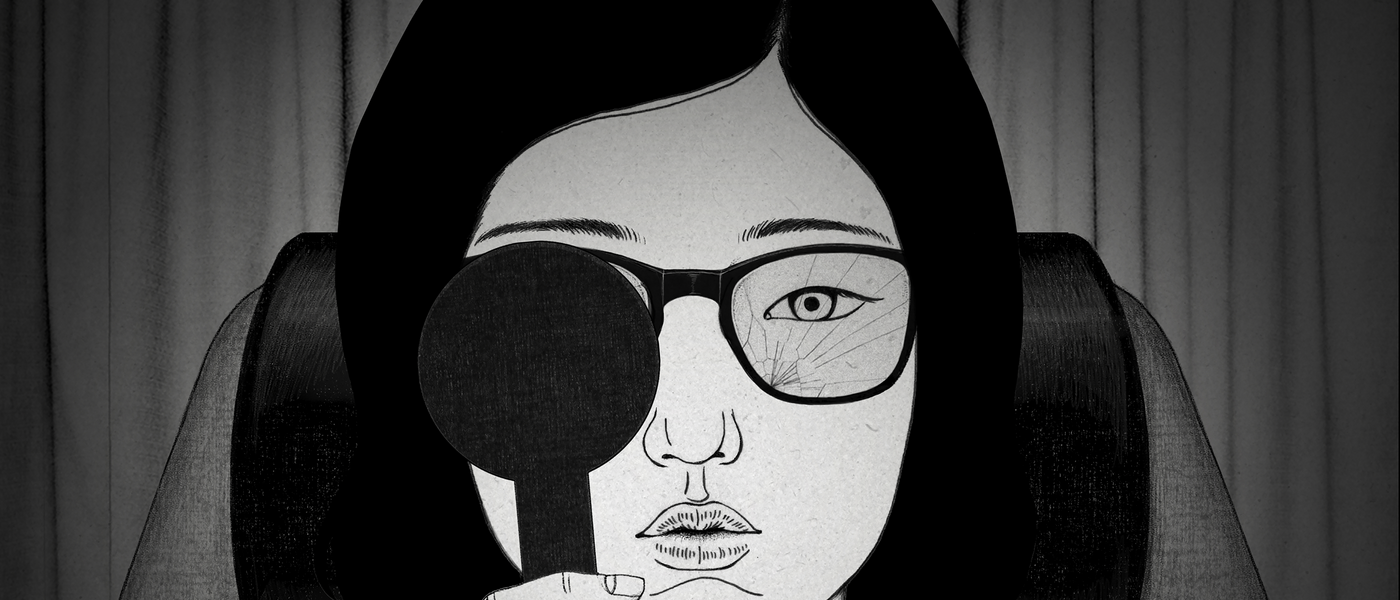Interview with JOUNG Yumi, Glasses director
by Grégory Coutaut

by Grégory Coutaut
A young woman breaks her glasses and suddenly everything changes around her: the metamorphosis has only just begun. They say beauty is in the eyes of the beholder, but what about less comfortable feelings? Beneath a delicate sense for detail and elegantly rendered black-and-white pencil strokes, Youmi Jung’s silent familiar vignettes map out the unconscious undercurrents expressed through our everyday gestures. All our senses are awakened over the course of this moving, surreal, and immersive inner journey.
Interview with JOUNG Yumi
Black and white mental spaces
Often metaphorical, my stories tend to explore emotional landscapes rather than focus on concrete external events. In this context, replacing a background with a void allows the audience to delve more deeply into the character’s inner state. For me, a void is not only a visual absence, it is a space where the character’s thoughts and emotions can reside. I like the tension that springs out when richly detailed scenes coexist with a calm open space. There’s something powerful in representing realistic scenes without any colour: it blurs our sense of time, making us wonder whether what we are seeing belongs to the past or the present. I have always found this blurred border fascinating. Furthermore, the way these finely drawn objects or characters appear in black and white often conveys a gothic sensitivity, a sort of tension that is both uncomfortable and alluring.
Daily rituals
My daily life is repetitive and silent but, below the surface, I feel a lively and changing inner landscape. The protagonist in Glasses does not change because of dramatic encounters or events, but rather through little ritualistic acts that she performs with her hands. These subtle and repetitive gestures gradually remodel her life and bring her to gently metamorphosise. Overall, I believe that pain evolves in our lives in similar ways: it is not in the most dramatic moments that its face changes, but rather, it shifts through discrete cracks in our daily lives and that is how we eventually open ourselves to it and accept it.
The codes of surrealism
I am drawn to surrealist expressions, but not particularly in the form of entirely unknown imaginary worlds. What appeals to me most is somewhat of a shift away from reality, like the kind found in the work of René Magritte. I prefer taking ordinary objects and subtly distorting them to create a sense of strangeness. This slight displacement often generates a tension close to the way I envision dreams. That is why I place such importance on realistic representation. I believe that when ordinary places and gestures are rendered with care and attention to detail, even the smallest fantastical element can seem real.
A hybrid animation technique
I feel drawn to the texture and emotion the pencil conveys. Whatever medium I am working with, I always try to preserve that tactile sensitivity in the final result. That being said, working exclusively with pencil has become increasingly difficult. Digital tools offer speed, flexibility, and efficiency, so I find myself turning to them more and more. Still, I have deep affection for the analogue quality of hand-drawn work, so I try to blend the two and achieve a natural harmony.